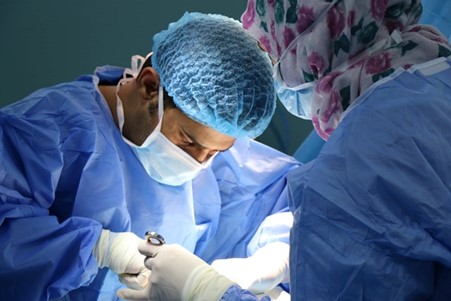Stanford Plavin is a board-certified anesthesiologist in Atlanta, GA and Founder of Technical Anesthesia Strategies and Solutions. In the article below Dr. Stanford Plavin gives an introduction to the topic of perioperative efficiency.
Although it’s not a word that most people hear every day, perioperative efficiency has directly saved the lives of countless people over the past few decades. Stanford Plavin explains that the term is used to describe the coordination of surgical care in order to optimize patient outcomes. This includes ensuring that the right procedures are performed at the right time, minimizing surgical complications, and reducing the length of hospital stays.
Here Stanford Plavin will explore the intricacies of perioperative efficiency and explain some of the methods that ensure that surgical procedures produce the best outcomes. With this information in hand, take a moment to appreciate the miracles of modern medicine and rest easy knowing that you’ll be safe if you ever need surgery.
Stanford Plavin on What is Perioperative Efficiency?
The perioperative period is the time from when a patient is admitted to the hospital for surgery until they are discharged. Stanford Plavin explains that perioperative efficiency is a term that refers to the coordination of care during this time in order to optimize patient outcomes.
This type of efficiency is essential because surgery is often a complex process with many different steps. If any one of these steps is not carried out correctly, it can have a serious impact on the patient’s health. Therefore, in order to ensure that everything goes according to plan, surgeons, nurses, and other medical professionals must work together closely.
In other words, medical professionals must also have a clear understanding of the steps involved in the surgery and the order in which they will be carried out.
What are the Goals of Perioperative Efficiency?
The ultimate goal of perioperative efficiency is to ensure that patients receive the best possible care and have the best possible outcomes. To achieve this, surgeons and other medical professionals must work together to minimize surgical complications and reduce the length of hospital stays according to Dr. Stanford Plavin.
There are several ways to achieve these goals. One is to ensure that the right procedures are performed at the right time while another is to make sure that surgical complications are minimized. Finally, hospital stays can be shortened by ensuring that patients are discharged as soon as they have recovered from the surgery.
What are the Methods of Perioperative Efficiency?
Stanford Plavin reports that there are several methods that have been shown to improve perioperative efficiency. One of the most important is known as the surgical safety checklist. This checklist is used to ensure that all of the necessary steps are taken before, during, and after surgery. This may involve:
- Checking to make sure that the patient has been properly prepared for surgery
Making sure that the operating room is ready and that all of the necessary equipment is sterilized and available - Ensuring that the surgical team understands the procedure that they will be performing
- Making sure that the patient is properly positioned on the operating table
- Verifying that the correct surgical site has been marked
- Ensuring that the patient is properly anesthetized
Along with a surgical check, another method that has been shown to be effective is known as time-out. Stanford Plavin says this is a procedure in which the surgical team takes a break before starting the surgery to make sure that everyone is on the same page. This break gives everyone a chance to double-check the patient’s chart, review the planned procedure, and confirm that everything is in order.
Post-Op Perioperative Efficiencies
After the surgery is completed, the surgical team will then go through an additional safety checklist to make sure that all of the necessary steps have been taken to ensure the patient’s safety. Stanford Plavin says this may involve making sure that all of the instruments have been accounted for, checking to see if the patient is bleeding, and making sure that the patient’s incisions have been properly closed.
If any one of the steps has not been carried out correctly, it could have a serious impact on the patient’s health. So, in order to accurately perform the complex process of surgery, medical professionals must work together to produce efficient patient recoveries.
Final Thoughts
According to Stanford Plavin, perioperative efficiencies are a vital step in the surgical process. Without these measures, patients would be at a much higher risk for surgical complications and a longer hospital stay. Thankfully, through the use of surgical safety checklists and time-outs, the perioperative period has become much safer for everyone.






